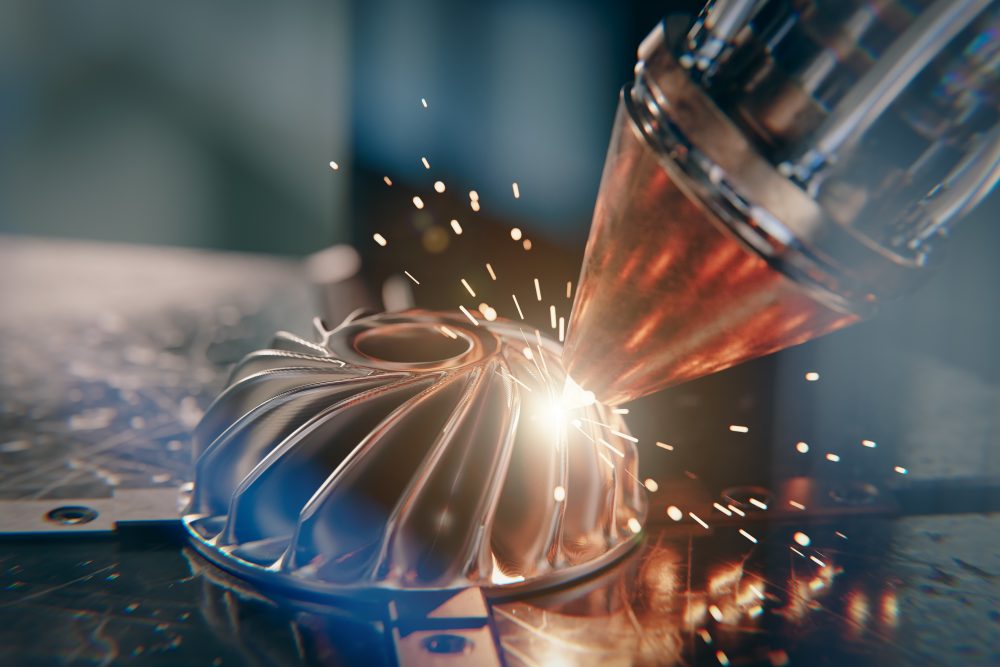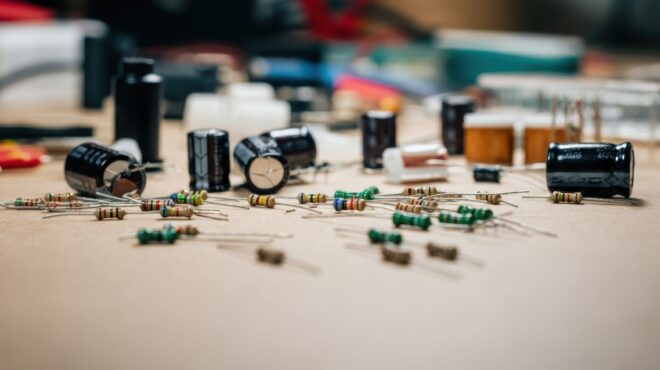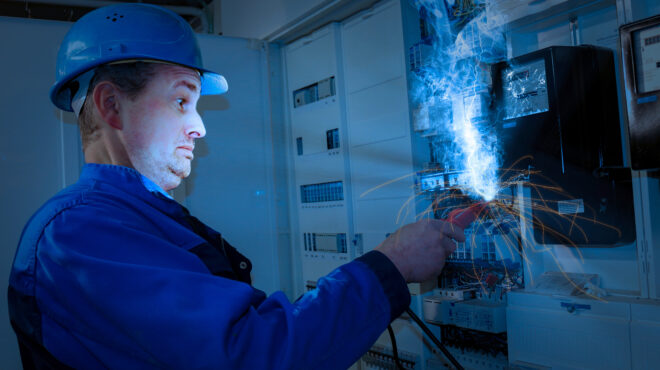
Additive Manufacturing: Trends in Design Engineering
Although the term "additive manufacturing" covers a wide range of production methods, industrial 3D printing is increasingly crystallizing as the new umbrella term. What innovations can be expected, and what developments must the design engineering industry prepare for? An overview and some forecasts.
Table of contents
What is additive manufacturing?
Additive manufacturing is better known as 3D printing and is an emerging and innovative manufacturing process. Additive manufacturing is fundamentally different from conventional production processes and opens up new possibilities for research and industry.
In this process, components are built up layer by layer, as opposed to conventional methods in which material is removed, for example by milling. This approach enables a high degree of flexibility and design freedom, especially in the production of prototypes, but now also in series production.
Trend 1: Additive manufacturing for all
3D printing is revolutionizing the manufacturing industry and is experiencing strong growth that is unlikely to abate anytime soon. Not only is this production method booming in terms of numbers, but also in terms of trust in the technology – which has proven to be quite reliable. In times of unstable supply chains, a key role could develop here. Generally speaking, 3-D printing is becoming socially acceptable!
Even users who previously regarded this manufacturing technology only as a gimmick or used it for experiments are now increasingly integrating it into various ongoing processes. This has a positive effect on the competitiveness of companies. However, trained personnel are still lacking in many cases, which will trigger increased demand for specific courses and advanced training in 3-D printing.
The range of physical and virtual training courses is already increasing, and an increase in terms of the quality of the training content is also to be expected. In many companies, personnel acquire detailed knowledge of additive manufacturing using 3-D printing processes via distance learning. However, practical on-site courses continue to be a relevant option.
Trend 2: Application-oriented production
The general goals in additive manufacturing are to increase production and efficiency. In order to be successful in this, factories are increasingly being designed in detail to be purpose-oriented, so that the processes within them correspond to specific tasks. Raw materials, systems, machines and processes are thus ideally coordinated with one another. 3D printing can be included as part of the production line – which will increasingly be the case in the future. This allows existing additive systems to be optimized.
But the periphery must also be designed more efficiently – in other words, all the supplementary equipment needed for additive manufacturing to run smoothly. This includes systems for material handling, process monitoring and quality control. In short, adaptations throughout the entire production process are necessary. However, the efforts are worthwhile: If the improvements are implemented holistically, innovations also result with regard to the machine design and the sequence of various processes. As a result, profitability increases.
Trend 3: Digitalization as a guarantee for efficiency
Digitized processes are known for providing increased transparency, performance and the ability to act in a wide variety of application areas. Value and supply chains as well as product life cycles can be analyzed down to the smallest detail – especially through digital twins – and checked for optimization potential.
Additive manufacturing is also increasingly focusing on the digitalization of physical processes. One of the most important factors here is decentralization, which is also associated with greater flexibility in terms of product location. In the event of a crisis, production orders can thus be relocated within a short time and production downtimes can be contained.
Trend 4: Hybrid materials on the rise
Not only the technology, but also the material used and its characteristics will become increasingly important in additive manufacturing processes in the future. The focus here is on hybrid materials, which can be modified during the manufacturing process by adjusting certain parameters. The characteristics of the materials can therefore be influenced to some extent – for example, flexibility (ductility) or strength (tensile strength).
In this respect, an enormous number of new fields of application are opening up for 3-D printing. Extremely high expectations exist in the medical technology and aerospace industries, where special guidelines and controls ensure the safety, quality and reliability of the products. Adaptable, i.e. hybrid, materials could be developed specifically for these requirements and applications. The prerequisite for this is the predicted closer connection between materials science, manufacturing and technology.
Hybrid materials as a preliminary stage for 4-D printing
Hybrid materials, i.e. materials that can be modified to a certain extent, are also the cornerstone for another innovation in additive manufacturing – 4-D printing.
The printing itself is still classically three-dimensional. However, the materials used react over time to external influences such as temperature, humidity, light or pressure and change their shape in a predictable way. 3D printing thus acquires a 4th dimension: time and the associated adjustments. The material used in this process, for example, requires so-called shape memory polymers to be able to remember its original shape and return to it. Self-folding structures are created that automatically change their shape in response to environmental stimuli.
In this respect, completely new processes and routines could be created in modern construction and manufacturing. A great deal of potential is attributed to visionary 4-D printing in medical technology, for example for the production of implants or prostheses. However, there would also be great opportunities for revolutionary developments in aerospace, construction, robotics and smart gadgets. However, 4-D printing technology is still in its infancy.
Trend 5: Sustainability moves into focus
The general interest in the topic of sustainability is continuously increasing, and in connection with this, companies are being challenged to produce more sustainably. In the manufacturing industry, concrete innovations therefore continue to be on the agenda. Application-oriented production has already established itself here as a sustainable alternative to classic processes. But the systems and materials used themselves are also currently undergoing numerous optimization processes. The aim is to improve components in such a way that they can be recycled more easily or dismantled in an environmentally friendly manner – entirely in line with the circular economy. Meticulous analysis and inspection of the manufacturing processes also provide meaningful data on the efficiency of the operations. This information subsequently serves as the basis for further sustainability approaches in the manufacturing industry.
Additive manufacturing as a trend-setting technology
Additive manufacturing is a revolutionary technology that will become increasingly important in the future. Current trends show that additive manufacturing is becoming accessible to all. It brings acceleration and precision in production processes for everyone. In short, production is becoming more application-oriented. Furthermore, digitalization ensures greater efficiency. Hybrid materials are also gaining in importance and opening up new possibilities. Ultimately, sustainability is also becoming more of a focus for the industry.
Implementing additive manufacturing trends with Bürklin Elektronik
Is additive manufacturing a relevant topic for you? Bürklin Elektronik’s online store gives you everything you need to produce according to current trends and standards when it comes to 3D printing. Browse through an extensive range of energy meters, functional measurement technology, practical connectors and numerous other components right now.
A specific product raises questions, or you need competent advice in other matters? Take advantage of Bürklin Elektronik’s service and contact our team of experts. We will be happy to help you and take care of your individual needs!
Would you like to learn more about the topic?
3-D printing is becoming increasingly important in terms of relevance and dissemination and has now also successfully gained a foothold in medical technology. Read more about the potential of the technology and how medicine benefits from it in the corresponding magazine article: How 3-D printing enriches medicine.


